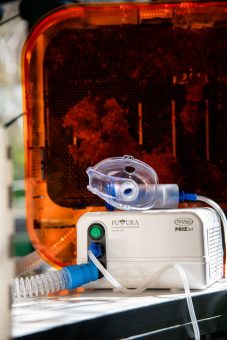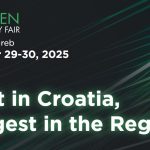As silent guardians of life on Earth, bees maintain the balance of the ecosystem through their continuous work, pollinating plants that feed both humans and animals. Their habitats are particularly endangered in urban environments, and it is entirely wrong to think that cities are not their place. Although these areas are filled with concrete, leaving space for these small but invaluable creatures is essential. In today’s world, establishing harmony between people, bees, and nature presents a real challenge, but also an opportunity.

Belgrade is an example of a very urban area that might not seem like a place where bees could find a home. Nevertheless, it is precisely in this city that the startup Futuristic Beehive was founded, developing an innovative idea – remarkable hives adapted for homes, allowing bees to move freely outdoors, thus connecting urban life with nature. This startup, born out of a passion for beekeeping and technology, brought together a team of experts who believe in transforming beekeeping and introducing new solutions to a traditional field, enabling bees to survive in cities. Mina Marjanović, a team member responsible for marketing, brand development, and customer relations, discussed the project’s vision in more detail.
“Today, with a team that believes in this idea and with growing interest from users, we believe we are on the right path towards transforming beekeeping and opening the doors to a new generation of beekeepers, who will use technology as a tool to advance this craft,” said our interviewee.
The Futuristic Beehive also enables observation of all processes within the bee colony and the safe collection of bee products (pollen, propolis, and honey) without the need for additional equipment. All elements are integrated into the product body except for an external inhalator intended for apitherapy. The core idea is to enable all users, not just beekeepers, to access fresh bee products and the complete process of API inhalation, making it available to people to boost their immune systems, reduce inflammation, and improve respiratory health. In this system, people are not passive observers but active participants. Through crucial but straightforward activities such as feeding and prevention, people directly contribute to the conservation of bees.The hive is mounted on a wall like an air conditioner, allowing bees to move freely towards nature.
IN FOCUS:
- More Efficient Subsidies – The Path to Mass Transport Electrification
- Volvo Trucks – The Market Leader in Electric Trucks in Europe and North America
- Complete EV Charger Offer With New Schneider Electric Models
“It was created with the intention of offering a true experience, where users not only watch bees go out and return to the hive but also intuitively feel how their daily lives are aligned with natural rhythms, encouraging them to feel like active participants in nature conservation, while at the same time bringing health and well-being into their homes,” Marjanović highlights.
The orange design with a golden frame was conceived to represent a blend of functionality and visual appeal. As Mina explained, the orange and golden shades evoke solar energy, warmth, and a sense of luxury. Such an elegant and modern appearance brings innovation into everyday spaces, transforming them into a true oasis of peace and offering access to a personal mini-pharmacy. Traditional methods of beekeeping rely on manual collection of bee products, physical inspection of hives, and manual analysis of the bee colonies’ condition, which are more demanding. In contrast, the Futuristic Beehive offers numerous advantages, making beekeeping more efficient and safer.
This hive is specially designed for raising nuclei—small bee colonies, which are more protected and allow easier colony development Urban beekeeping creates a sustainable synergy between people and nature. We care for the bees by providing them with a safe habitat, and they, in return, care for us through pollination and the production of honey, wax, and other bee products that offer numerous benefits for humans.
Prepared by: Katarina Vuinac
Read the story in the new issue of the Energy portal Magazine SUSTAINABLE MOBILITY



